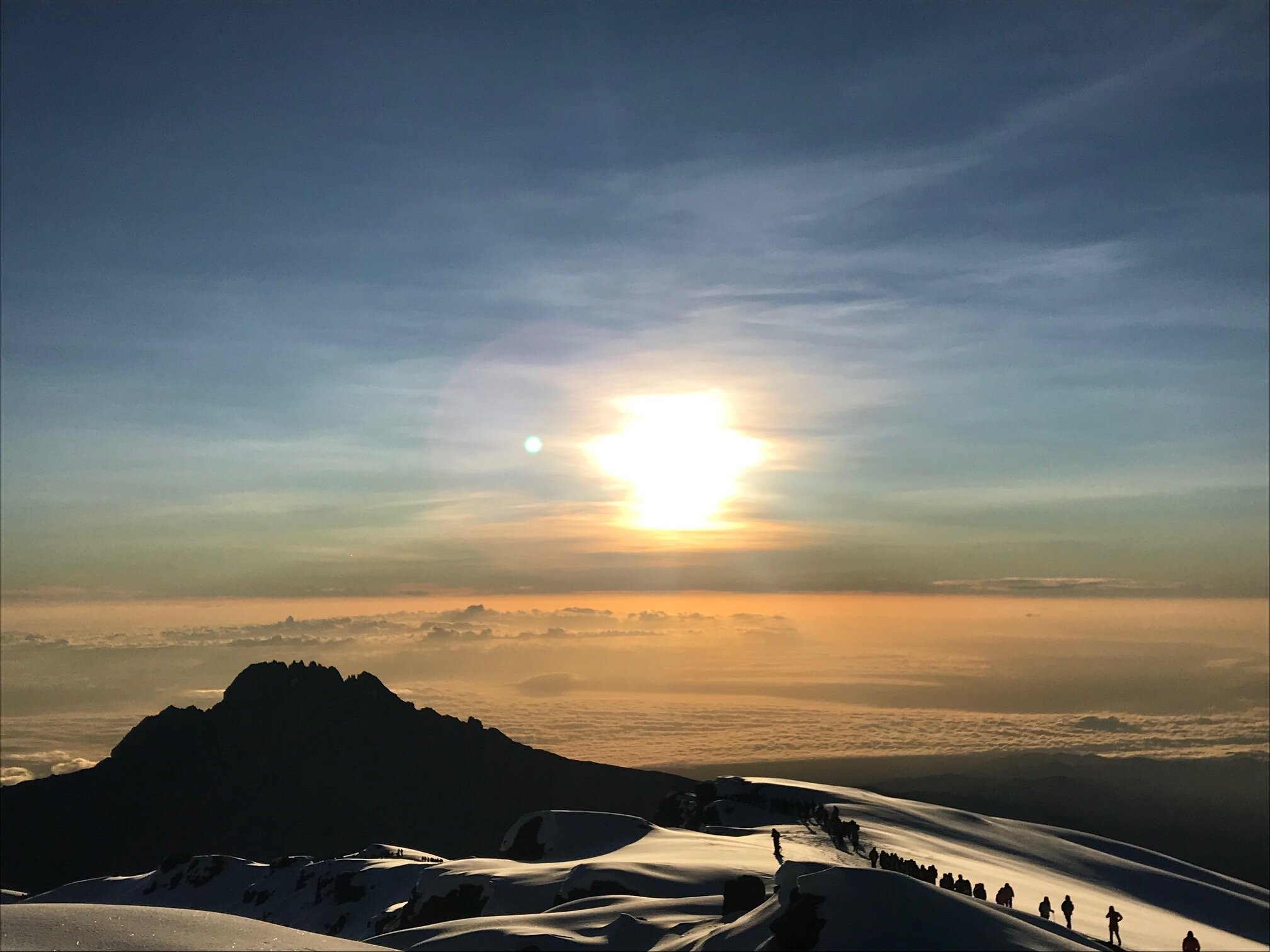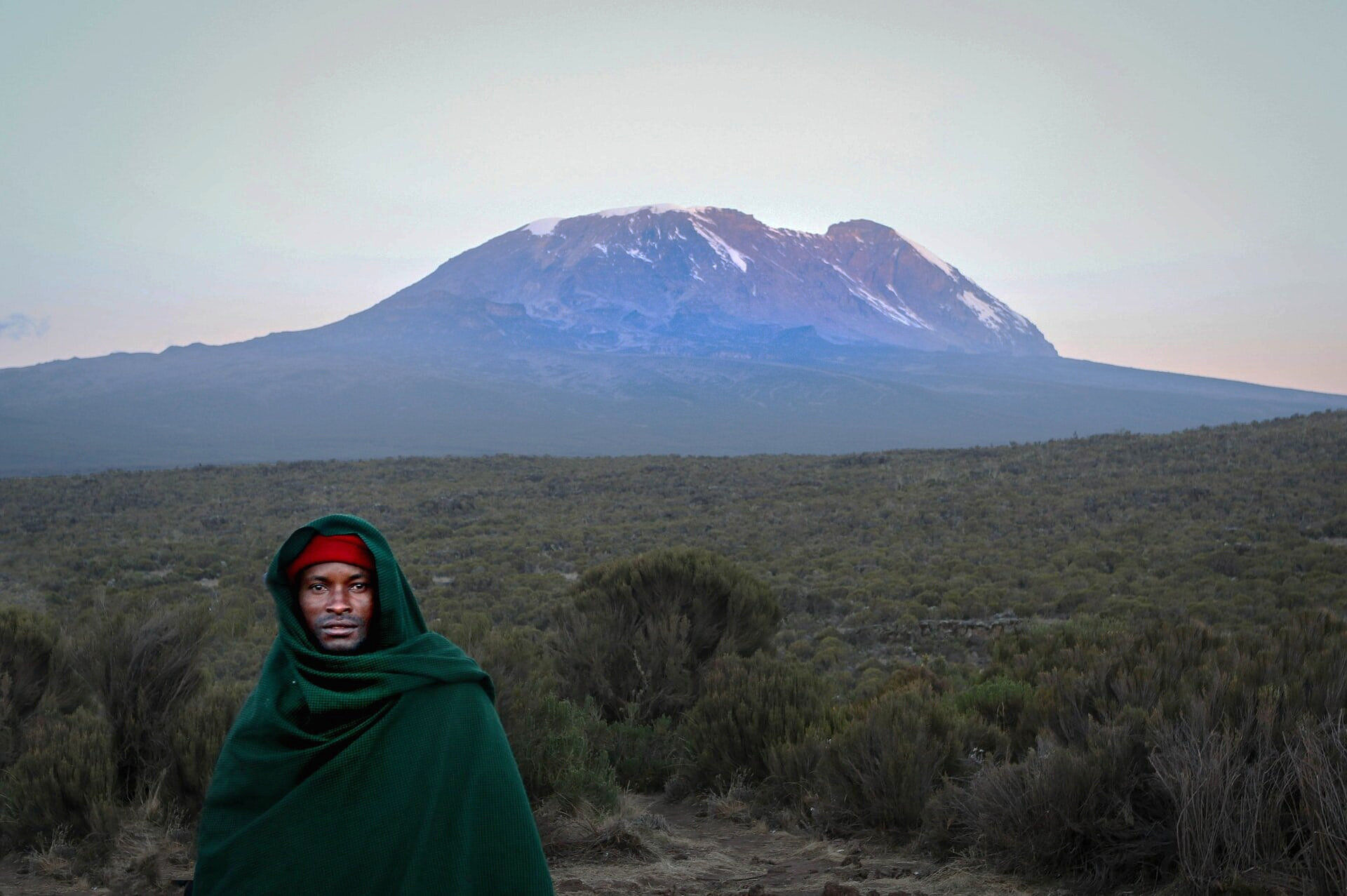Safaris & Hiking in Mount Kilimanjaro National Park
Mount Kilimanjaro is one of the biggest draws for people considering whether to book a Tanzania safari holiday over another African country famous for its safari tours.
Mount Kilimanjaro National Park is home to the highest mountain in Africa and the highest free-standing mountain in the world. At a height of 5.985 meters (19,341 ft), Mount Kilimanjaro is one of the world's most accessible summits. With its snow-capped peak, Kilimanjaro is an amazing natural phenomenon that stands alone above the plains overlooking the savannah. Mount Kilimanjaro is made up of three volcanoes, Mawenzi in the east (5.280 m), Shira in the west (4.269 m) and Kibo, the youngest volcano (5.895m). Shira and Mawenzi are extinct and the last major eruption of Kibo was between 150,000 and 200,000 years ago. Today, Kibo lies dormant but it could awaken at any time.
Mount Kilimanjaro National Park provides an amazingly diverse series of habitats as it rises from the pastures and bushlands of the native Maasai people to the boundary of the national park. The mountain has five primary vegetation zones from the lowest point to the highest: lower slopes, montane forest, heath and moorland, alpine desert and summit. The lower regions of the park are dominated by lush green montane forests that have almost 140 different tree species. A little higher up, giant lobelias grace the moorland zone. Over 4.000 m, you’ll find a moonlike desert, where not too many things grow and the land is full of dust and rocks. Closer to the summit, hikers will be rewarded with beautiful sights of glaciers and a deep crater.
The entire mountain is very rich in species — mammals, in particular — many of which are endangered. Because of this combination of features but mainly its physical form, height, snow cap and isolation above the surrounding plains, Mount Kilimanjaro is arguably the most unique mountain in the world, and it is wholly deserving of its place on avid hikers and animal enthusiasts’ bucket lists.
MOUNT KILIMANJARO HIKING TOURS
The majority of visitors to the park are hikers. As is to be expected, all have the same goal in mind – to make it to Africa’s highest peak. Here are 10 reasons to climb Kilimanjaro.
There are 7 trekking routes up the mountain; some are designed for faster ascents, others offer more time to acclimatize. Marangu Route is one of the easiest routes for unexperienced hikers and those looking for the most comfortable ascent possible (overnights take place in huts). The Rongai route is the quietest and the best option if you’re climbing during the rainy season because this part of the mountain gets the least rain. Camping routes include Shira, Lemosho and Machame and while these are a bit more challenging, they’re also much more scenic. The most demanding, and the least used route, is Umbwe.
Whichever route you take, you’ll begin in the richly vegetated lowland forest. Although a visit to Kilimanjaro is not really about the wildlife, it is in this lowland forest where you’ll have the greatest chance of seeing buffalo, elephants, monkeys and eland.
HOW CHALLENGING IS IT TO CLIMB MOUNT KILIMANJARO?
To climb Kilimanjaro is a great challenge but feasible for the active traveler or fit walker looking for something new. You don't need any alpine climbing experience, and you do not need crampons, ice axes, ropes or any sort of technical equipment that is often required on alpine climbs. There are very few places on each route which require you to use your hands as well as your feet. It’s primarily an uphill walk and any reasonably fit person has an even chance of reaching the summit. Just be realistic about the mountain and its harsh conditions. Of course, you should be in fairly good shape and not try and push the climb, giving yourself at least 6 days for the ascent. Still, the extreme cold and altitude can hit even the most experienced climber, and symptoms of extreme altitude sickness – headache, nausea, diarrhoea and loss of appetite – should be taken very seriously.
You’ll need waterproof cold-weather clothing and gear, a good quality sleeping bag, and plenty of water bottles. The grandeur of Mt. Kilimanjaro is awe-inspiring but, ultimately, this mountain must be respected… not everyone makes it to the summit.
THE BEST TIME TO VISIT MOUNT KILIMANJARO NATIONAL PARK
Kilimanjaro is accessible at any time during the year but the weather patterns on the mountain are erratic and hard to predict. Traditionally, the main seasons are from December through March and from June through October with temperatures in Moshi averaging 22 degrees Celsius and summit temperatures of around 7 degrees C. The best time for climbing, however, is during the dry season from late June to October. The rains are in April, May and November but because of climate change, sometimes the rains come earlier or later. During the rains, we recommend the Rongai route as the northern side of the mountain is more sheltered.
Visiting Mt. Kilimanjaro National Park can be one of the greatest experiences of your Tanzania Holiday, and it’s great to pair it with the similarly iconic Ngorongoro Conservation Area and/or the Serengeti National Park where the ‘The Great Migration’ of wildebeests and zebra takes place and which has the largest population of lions in Africa.
Few places are as famous or have the power to so prominently display the magnificence of our planet as Mount Kilimanjaro, and Sababu Safaris offers safaris departing from Arusha and Msohi going to Mt. Kilimanjaro, West Kilimanjaro and other exciting Tanzania parks.
If you would like to challenge yourself to summit the highest peak in Africa, please contact us and tell us everything you’d like to see and do in Tanzania. We will put together a bespoke itinerary for you and you won’t pay a deposit until you are satisfied that the tour is everything you ever dreamed it could be!









